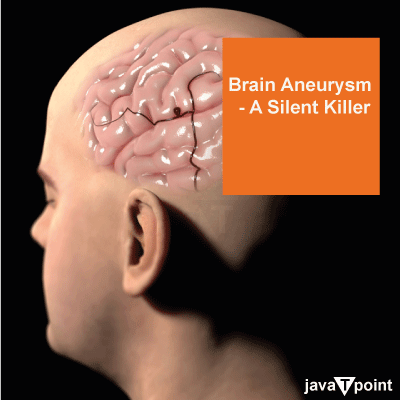Brain AneurysmA brain aneurysm, sometimes called a cerebral aneurysm, is a bulge in a weak portion of a cerebral artery. The continual blood flow pulls the weakened area outward, forming a blister-like protrusion. The aneurysm expands as blood pours into the bulge. It's comparable to how a balloon thins out and becomes more prone to bursting as it fills with air. Aneurysms in the brain can occur anywhere, but the majority form in the major arteries that run down the base of the skull. Multiple aneurysms affect 10% to 30% of persons who suffer a brain aneurysm. Most brain aneurysms are minor and cause no symptoms. 
If an aneurysm puts pressure on surrounding nerves or brain tissue, it might cause symptoms. When an aneurysm leaks or ruptures (bursts open), it causes brain haemorrhage. A ruptured brain aneurysm is potentially fatal and requires rapid medical intervention. With a ruptured aneurysm, the risk of mortality or disability increases over time. What Happens When a Brain Aneurysm Ruptures?When the blood vessel ruptures, blood pours (haemorrhages) into the surrounding brain tissue. The blood can put too much pressure on your brain tissue, causing it to bulge. In addition to other symptoms, it frequently causes a violent headache known as a thunderclap headache. A burst brain aneurysm can result in major health issues such as:
Who do Brain Aneurysms Affect?Aneurysms in the brain can occur at any age. However, they are most likely to affect adults aged 30 to 60. They are also more common in women and persons born as females than in men and people born as males. How Common are Brain Aneurysms?A brain aneurysm that isn't bleeding (an unruptured aneurysm) affects up to 6% of people in the United States. Ruptured brain aneurysms are rare. They affect roughly 30,000 persons in the United States each year. Symptoms and CausesThe symptoms of a brain aneurysm differ depending on whether it has ruptured:
What Causes a Brain Aneurysm to Rupture?A brain aneurysm can rupture (burst) and haemorrhage due to the conditions that lead to its development. According to researchers, the most prevalent cause of a rupture is excessive blood pressure. Blood pushes harder against the walls of blood vessels when blood pressure rises. The following situations can cause a brain aneurysm to rupture by raising blood pressure-
Many factors influence whether an aneurysm will be dangerous which includes-
People who have several brain aneurysms or who have previously bled from an aneurysm are at the greatest risk of having a brain aneurysm rupture.
Next TopicBrain Cancer
|
 For Videos Join Our Youtube Channel: Join Now
For Videos Join Our Youtube Channel: Join Now
Feedback
- Send your Feedback to [email protected]
Help Others, Please Share









